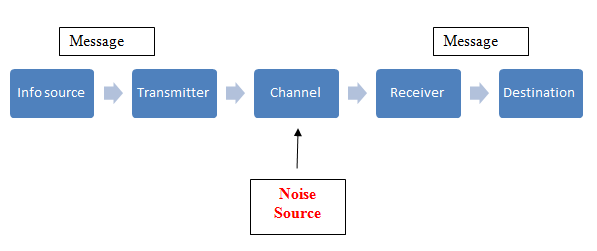
Importance of administration in managing operations, supply-chain management and quality is significant. Administration caters for information needs of organisations and also deals with developing and improving organisational processes, policies and systems. Operations management is associated with information needs at various levels i.e. information about the availability of stock, information about the quantity to be produced, information about the workforce availability etc. and lack or inaccuracies associated with any of this information may have negative effect on business performance, hence the importance of administration. Implementation of management initiative of producing upgraded product range for online sales in practice is going to further increase the importance of administration for Company’s operations management. For example, inventory management is going to be a major issue caused by the management plans of producing upgraded product range for online sales due to the lack of inventory space. This problem can be solved by applying Just-in-Time (JIT) principles. It has been noted that “the core philosophy of JIT is to provide an organisational framework to continuously reveal opportunities for elimination of non-value added activities” (Davis, 2009, p.43). High level of sophistication of information and communication technologies (ICT) offers attractive opportunities for administrative managers in terms of increasing the level of effectiveness of various administrative processes. For example, in case of JIT system in particular information about needed parts can be sent to relevant supplier automatically without human intervention whatsoever. References Davis, M. (2009) “The Fundamentals of Branding” AVA Publishing SA

Company operations have direct impact on business performance and internal measures of success can be applied in order to assess the nature of this impact. Great impact of operations on business performance can be explained by using the term of balanced scorecard, that consist of a set of measures used to assess four critical aspects of a business practice: financial performance, customer service, internal processes and innovation and learning. Most important operations-related internal measures of success within balanced scorecard include the amounts of waste and scrap, duration of time to produce a single unit, numbers of defected units, numbers of returned units, and the level of effectiveness of labour utilisation. Balanced scorecard has been widely praised by business scholars and practitioners for its advantages that include possibility to identify ‘best practices’ more effectively, opportunities to identify additional sources of competitive advantage, achieving alignment between key performance measures and organisational strategy, possibility view operations from holistic approach etc. Accordingly, acknowledgement of operations as one of the critical measures of success within the framework of balanced scorecard can be interpreted as indication of great impact of operations on business performance. Unless the quality aspect of operations is addressed in an effective manner, proposed management initiative of producing upgraded product range for online sales may have negative effects in internal measures of success at least in short-term perspective. In other words, on-site factory is already operating to near capacity with limited space for increasing inventory, and therefore attempts to increase the volume of output with disregard to quality, capacity and inventory is going to cause internal measures of success to decline which can lead to the overall decline of business performance.

Operations management can be defined as “a systematic approach to address all the issues pertaining to the transformation process that converts some inputs into output that are useful, and could fetch revenue to the organisation” (Davis, 2009, p.5). To put it simply, operations management for the Company comprises management of activities and processes that transforms raw materials into products. Operations management is inter-connected with many other business functions such as marketing, new product development, accounting and finance, human resources management (HRM), supply-chain management, as well as, technical functions of the business. For example, the quality of supply chain management for the Company directly effects operations management in a way that inbound logistics of raw materials of low quality is going to compromise the quality of the output. Similarly, operations management do have direct impacts of performance of marketing departments, because low quality of Company’s power garden tools is may contradict with marketing communication message of the marketing department with negative implications on Company’s brand image. Therefore, operations management needs to be viewed from a systematic approach as a part of overall organism known as the organisation. Activities involved in operations management for the Company include designing processes and products, controlling and purchasing the inventory, planning and control of operations and planning raw materials and production capacity. Implementation of the proposed management initiative of producing upgraded product range for online sales is going to have significant implications on all activities involved in operations management in strategic and tactical levels. In other words, the proposal is associated with significant increase in the volume of output despite the fact that the Company is operating to near capacity with limited space for increasing inventory. References Davis, M. (2009) “The Fundamentals of Branding” AVA Publishing SA

This article proposes a communication model for organisation in health industry. Communication is “a process of circular interaction involving a sender, receiver, and message” (Moran et al., 2007, p. 45) and the quality and level of communication plays an important role in running the operations by the health authority. Facilitation of communication in the health authority organisation in order to send messages to internal and external stakeholder can be explained by application of Shannon and Weaver’s (1949) model of communication which consist of five elements: information source, transmitter, channel, receiver and destination. Shannon and Weaver’s (1949) model of communication Adapted from Chandler (1994) Information source in case of the health authority relates to senior level management aiming to communicate information about changes in the organisation. Transmitter for the health authority relates to press office in case of communication with external stakeholders. In internal communication, on the other hand, line level managers and immediate supervisor may serve as transmitters of messages sent by stop management. Channels available for the health authority to transmit its messages include but not limited to the official website of the organisation, press releases in local and national media, newsletters etc. Receiver can be represented by media for external communications as a wide range of media platforms can discuss official press releases of the health authority organisation thus, causing the message to reach its destination. Destination for communication message represents individuals and parties for whom the message is intended. Noise is an important factor in this model of communication as it can interfere in communication process potentially causing messages to be misunderstood. Therefore, it is important for the health authority management to be proactive in terms of eliminating or at least minimising the noise. References Chandler, D. (1994) “The Transmission Model of Communication” Available at: http://www.aber.ac.uk/media/Documents/short/trans.html…

This brief article discusses information management processes for health authority focusing on information communication technologies. Information is a vital tool for the health authority and its effective management is the most basic responsibility of administrative management. Information management process for the health authority may include the following stages as proposed by Akwetey (2011): 1. Collecting information. In health authority organisation information can be collected from application forms and other internal and external sources. Moreover, primary data collection can be initiated with the use of surveys, focus groups, experiments etc. 2. Processing information. This stage can be greatly assisted by the application of relevant analytical software and the level of sophistication of such software is rapidly increasing. 3. Analysing the information. Information on its own does not represent value in practical levels; therefore information needs to be transformed into knowledge through critical analysis. 4. Acting upon the information. This last stage in information management process is associated with developing recommendations according to analyses of information and application of recommendation in practice. Dramatic development of information technology and intensive integration of internet in increasing range of organisational processes has increased the level of convenience and effectiveness of each stage in information management process. Specifically, information and communication technologies (ICT) represent an effective platform to be used in data collection, processing of information, and data analysis. ICT applications can be divided into two categories: standard and specialised (Shane, 2008). Standard applications can be used in a wide range of industries and purposes and they include word pressing applications such as Microsoft Word and Text Document, database software such as Access, Oracle etc. Specialist ICT applications, on the other hand, are applications that are industry-specific. Specialist applications available for the health authority include Electronic Patient Record Keeping (EPR), Medical Use Expert System (MYCIN) and others. References Akwetey,…

Administration can be defined as “activities involved in managing a business, organisation, or institution” (Macmillan Dictionary, 2014, online). Main differences between administration and management relate to objectives, skills and competencies and the level of involvement in producing products and providing services. Specifically, managers are involved in producing products and providing services in a direct manner, whereas administrators are involved indirectly through developing relevant policies, aims and objectives. Administrative management primarily deals with information needs of managing organisations. Due to the recent restructuring of the health authority and resulting increase of geographical scope of operations encompassing four towns the need for timely and accurate information has increased for senior management. Accordingly, this change has further increased the importance of administrative management for the health authority. Core management functions include planning, organising, staffing, leading and controlling and administration plays an important role in facilitation of these functions in an effective manner. For example, as part of staffing management function health authority senior management need to ensure that employees in new sub-offices in four towns have common set of skills and capabilities for similar positions. This objective can be achieved by application of administrative measures that include formulation of relevant policies and devising effective procedures. Generally, effective administration can benefit the health authority in achieving its organisational objectives in three ways: data processing, office services and systems analysis and design. Data processing can be specified as an important aspect of health authority operations due to increasing relevance and range of data such as patient information, information about suppliers and employees, relative performance of sub-offices etc. Effective administration can assist in data processing practices of the health authority in a range of ways discussed further below in greater details. Office services represent another critical area for the health authority since the organisation has expanded…

According to Horn (2013), although many people have certain opinions about emotional intelligence, the numbers of definitions of the term may be equal to the numbers of authors who addressed this issue. Emotional intelligence has been defined as “the potential to be aware of and use one’s own emotions in communicating with oneself and others and to manage and motivate oneself and others through understanding emotions” (Wharam, 2009, p.11). Alternatively, Bradberry and Greaves (2009) define emotional intelligence as the ability of individuals to understand, express and control their emotions. According to Barrows and Powers (2009) as taken from Oxford English Dictionary hospitality means “the perception and entertainment of guests, visitors or strangers with liberality and good will” (Barrows and Powers, 2009, p.4) Chakraborty and Konar (2009) identify four important attributes of emotions as intensity, brevity, partiality and instability. Intensity relates to the extent of strengths of emotions. Brevity, as an important attribute of emotion relates to its duration. Partiality, on the other hand, is a target such as person or object towards whom or which emotion is directed. Lastly, instability relates to transient psychological and physiological processes experienced by people. According to Bradberry and Greaves (2009) emotional intelligence accounts for 58% of performance for all kinds of jobs. However, Bradberry and Greaves (2009) do not explain methods used to obtain this specific figure and this fact compromises the value and validity of their claim. Moreover, according to Bradberry and Greaves (2009) the levels of personal competence are based on self-awareness and self-management, whereas social competence is based on social awareness and relationship management. Four components of emotional intelligence Source: Bradberry and Greaves (2009) According to Sparrow and Knight (2009) emotions are associated with physiological change such as acceleration of the rate of heartbeat, changes in blood pressure and facial expressions,…

Strategic Theory: Value-Chain Analysis The model of Value-Chain Analysis introduced by Michael Porter (1985) divides business activities into two groups: primary activities and support activities. Primary activities include inbound logistics, operations, outbound logistics, marketing sales, and service and they are related to producing products and services in a direct manner. Support activities, on the other hand, as the name suggests needed to support primary activities of the firm and they consist of firm infrastructure, human resources management, technology development, and procurement. Core benefit of Value-Chain Analysis framework relates to identification and utilisation of opportunities to add more values to certain business processes with positive implications to overall level of competitiveness of the firm. In other words, application of Value-Chain Analysis model provides platform for analysing business processes in an individual manner, so that competitive advantage can be obtained in relation to a specific business process. Moreover, Value-Chain Analysis can be applied to increase the levels of overall strategic competency of the business and strategic competency can be explained as “what in business units does exceptionally well -such as a customer relationship programme, manufacturing, or promotion – that has strategic importance to that business” (Aaker and McLoughlin, 2010, p.7) Inbound logistics relates to a set of activities associated with receiving materials and warehousing and it also includes supply-chain management practices. Operations, on the other hand, relate to the process of transformation of inputs into outputs. Outbound logistics is associated with processing of orders and distribution of products and services. Marketing and sales refers to activities of development and implementation of integrated marketing strategy of the firm. The latest trends in marketing and sales activities can be specified as increasing integration of social media, focus on corporate social responsibility and customer data privacy. Service activities within the framework of Value-Chain Analysis relate to…

This article contains application of Vernon’s Product Life Cycle on the case study of Shanghai Vision Technology Co., Ltd, a medium sized manufacturer of 3D printers and other innovative products based in Shanghai, China. Products of Shanghai Vision Technology to be sold in new markets follow a specific life cycle pattern. This pattern can be effectively explained using Vernon’s product life cycle which comprises four stages: introduction, growth, maturity and decline. Introduction stage for Shanghai Vision Technology 3D printers and other products commences when the product is offered in new market for the first time. During this stage Shanghai Vision Technology products are purchased mainly by ‘innovator’ and ‘early adopter’ consumer categories and the role of effective integrated marketing strategy is paramount. Growth stage for Shanghai Vision Technology products is associated with rapid increase of the sales volume due to the impact of marketing initiatives and word-of mouth marketing. It is important for Shanghai Vision Technology to ensure the supply of its products in the market during this stage. Maturity stage is reached when the majority of Shanghai Vision Technology target customer segment already posses 3D printers and other products offered by the company and its competitors. Maturity stage is associated with market saturation. Decline stage is inevitable for Shanghai Vision Technology products, as well as for products of any other company regardless of the industry and size of the market. Determining the timeframe of this stage in an appropriate manner and introducing new products to the market during the later stages of decline plays an important role for Shanghai Vision Technology in terms of retaining its share in new markets. …

This article contains application of Dunning Eclectic Paradigm on the case study of Shanghai Vision Technology Co., Ltd, a medium sized manufacturer of 3D printers and other innovative products based in Shanghai, China. Exporting can be specified as the most appropriate new market entry strategy for Shanghai Vision Technology during the early stages of internationalisation. Exporting new market entry strategy can be explained a greater depth using Dunning Eclectic Paradigm (DEP) that relies upon three types of advantages – ownership, location and internationalisation advantages. Ownership advantages The choice of exporting as new market entry strategy grants Shanghai Vision Technology the complete ownership advantage of all components of marketing mix. In other words, by choosing exporting the company retains complete freedom in terms of introducing changes to pricing, product specifications, distribution channels and promotion initiatives. Location advantages Ownership and internationalisation advantages to be derived by Shanghai Vision Technology due to the selection of exporting new market entry strategy is going to be facilitated at the expense of location advantages. Specifically, by exporting its products to new markets Shanghai Vision Technology would not possess location advantages with negative implications such as being disadvantaged from tariff barriers and higher transportation costs compared to local businesses. Internationalisation advantages Internationalisation advantages within Dunning Eclectic Paradigm relates to cost advantages that are gained through organising operations within geographical boundaries of new markets. Positive impact of internationalisation to Shanghai Vision Technology is limited during the first stage of international market expansion strategy due to the recommended choice of exporting new market entry strategy. Nevertheless, this specific type of advantage may become available to Shanghai Vision Technology during the later stages of Uppsala model described above once the company establishes sales subsidiaries and production unit abroad.
